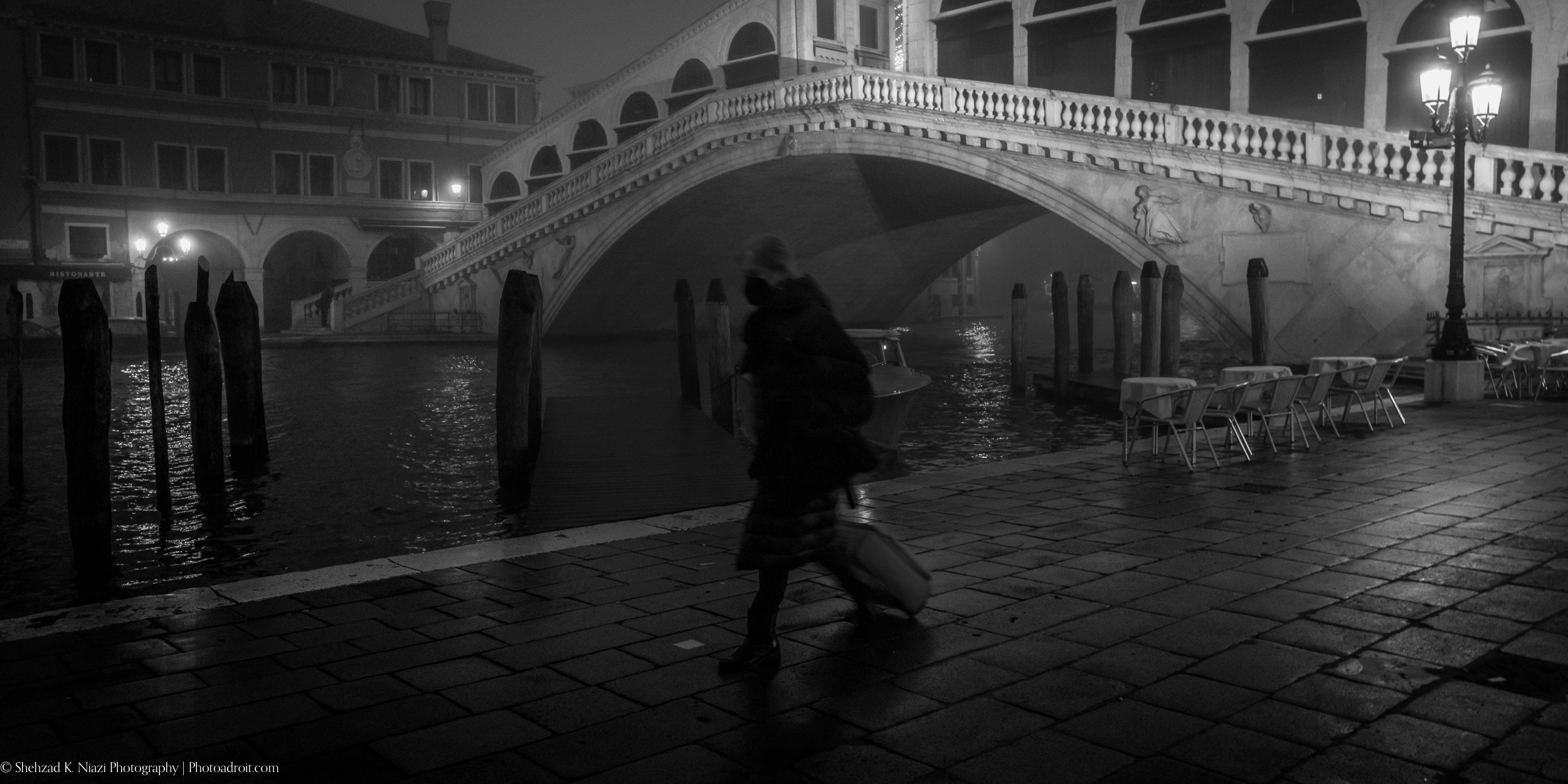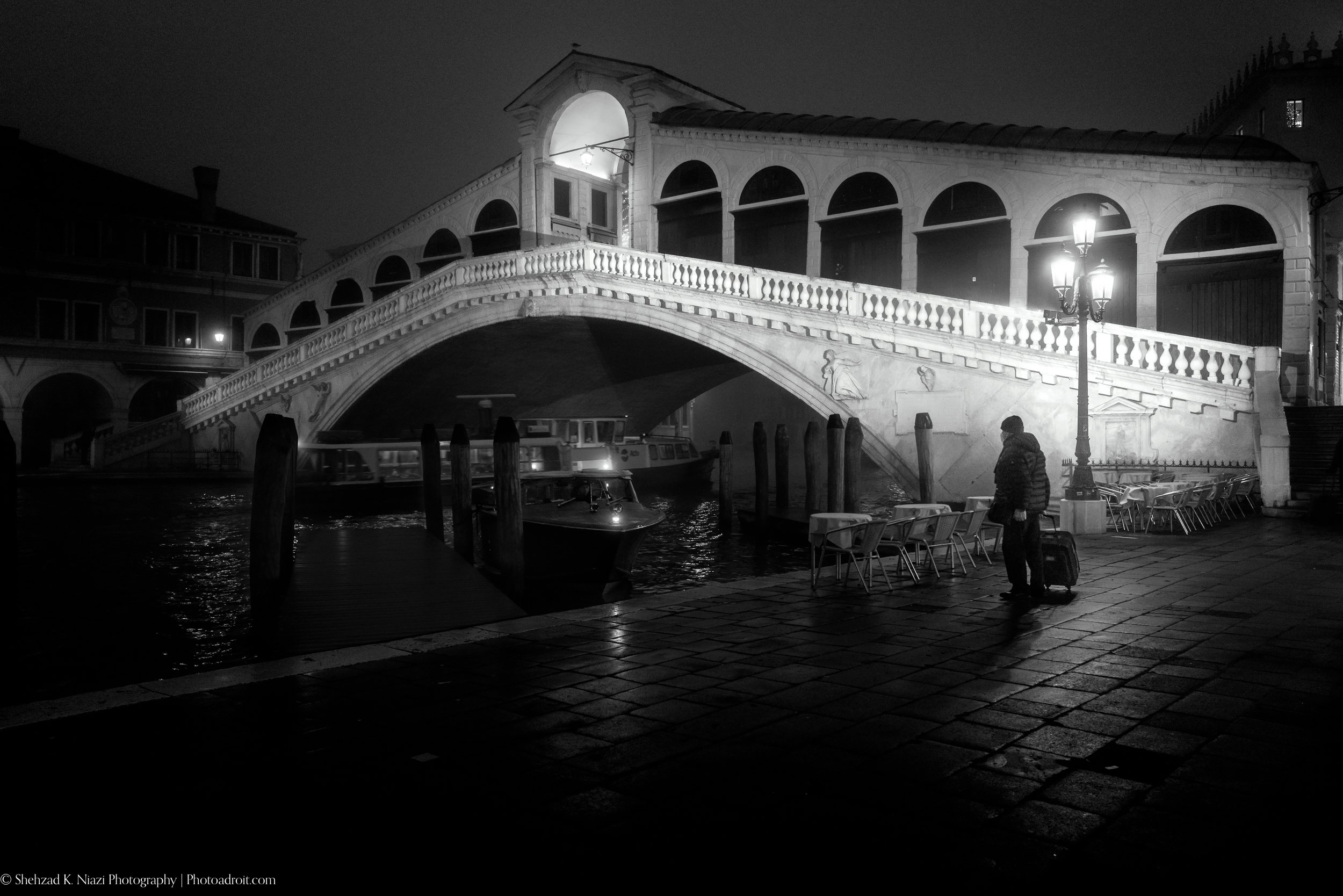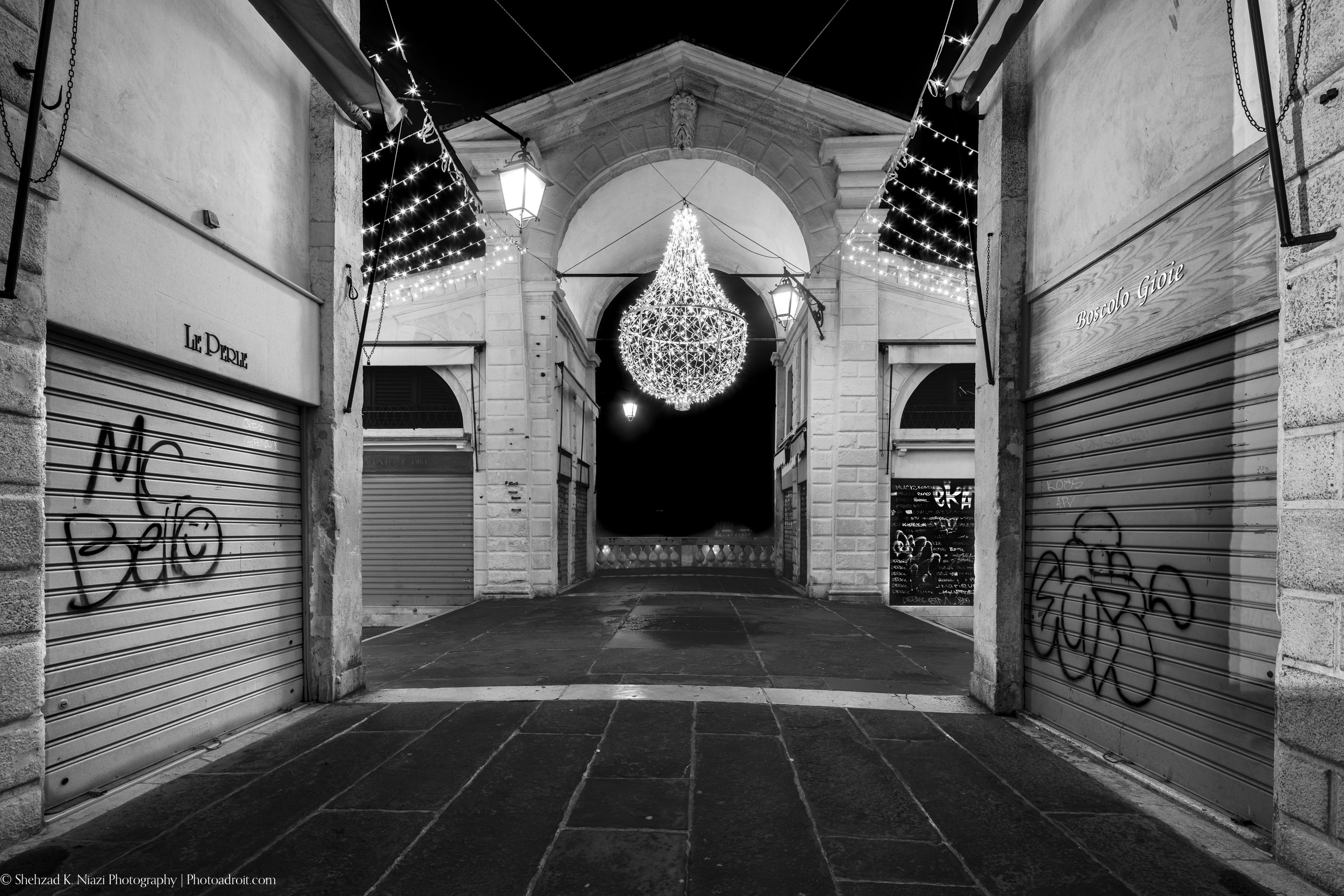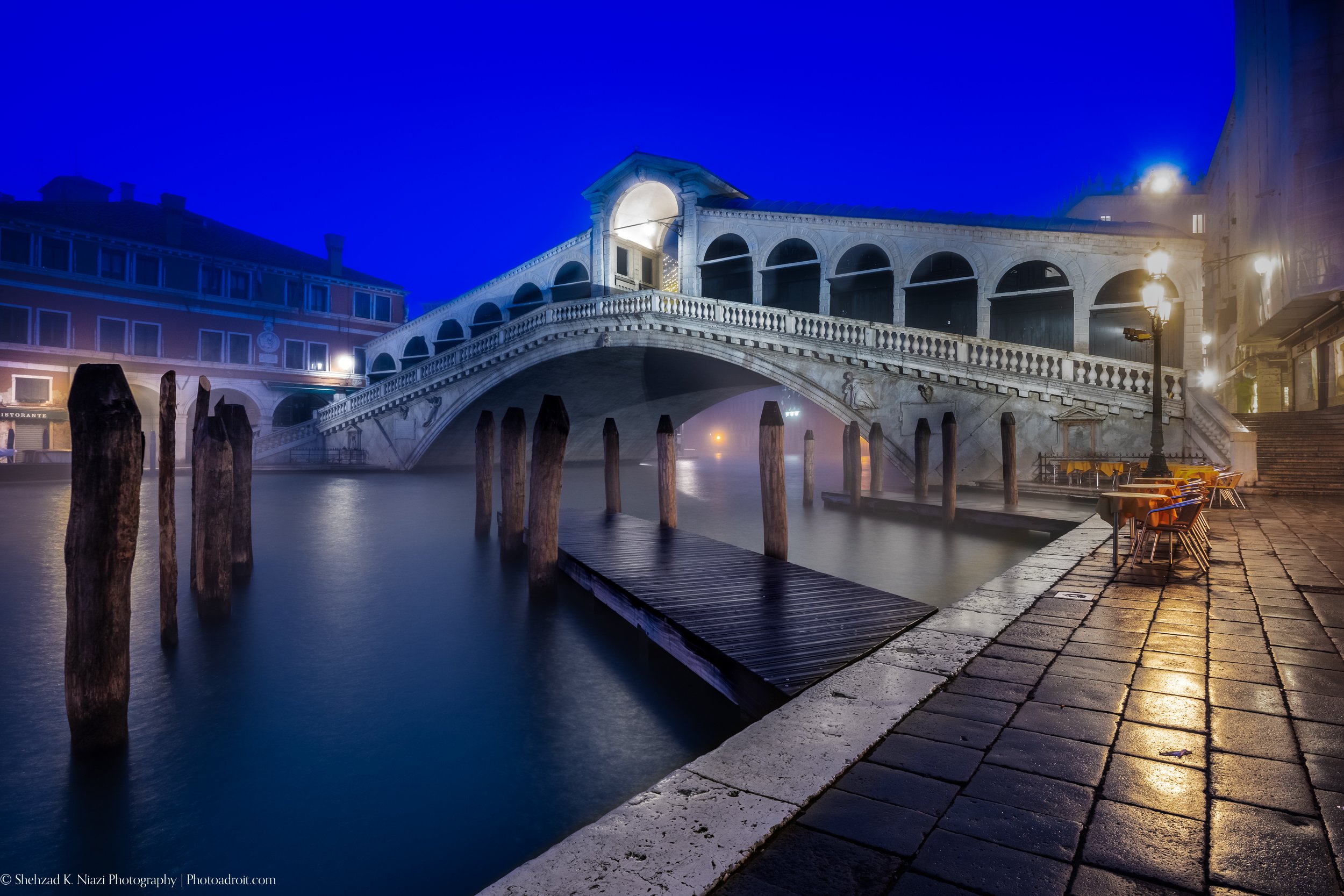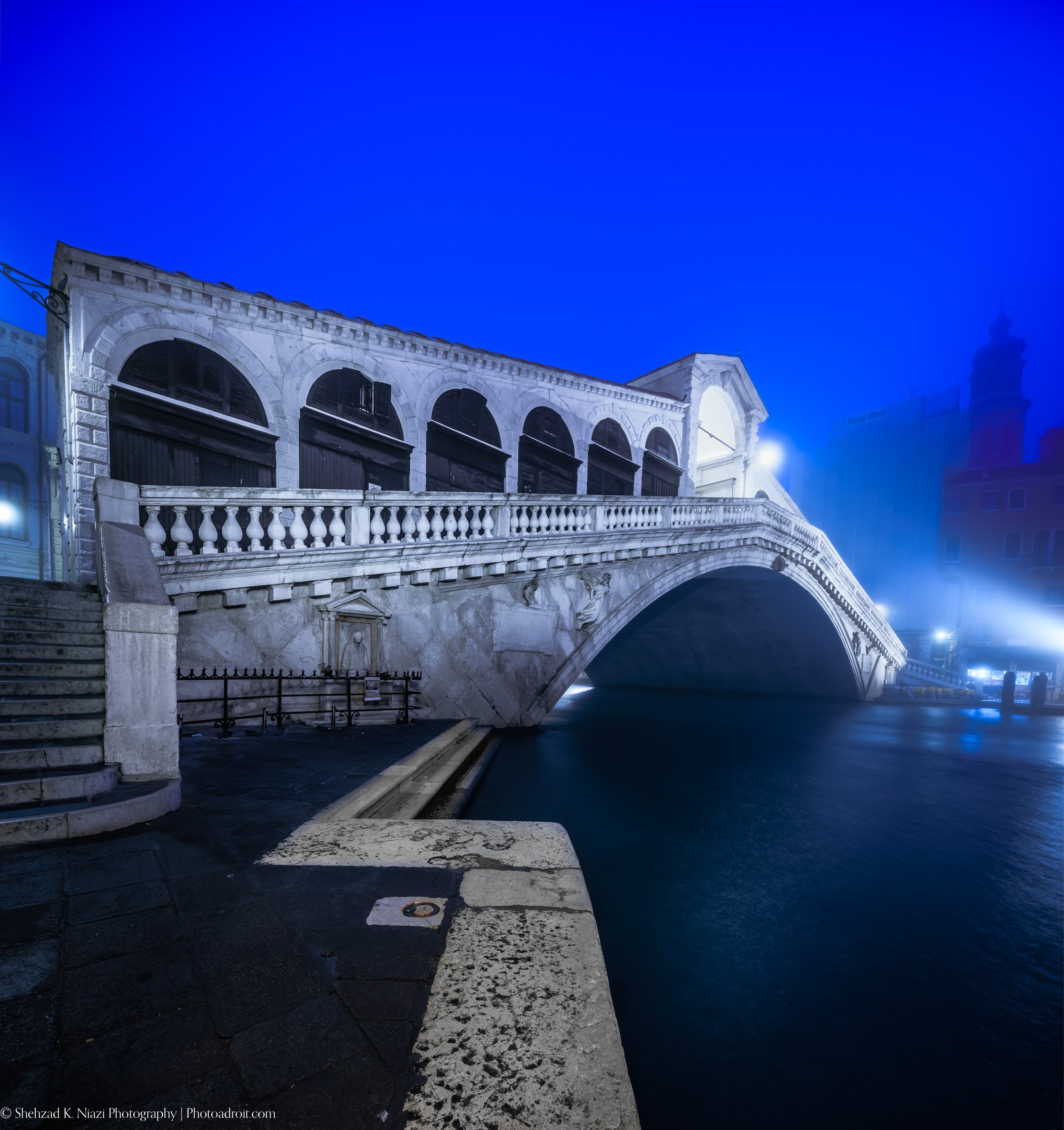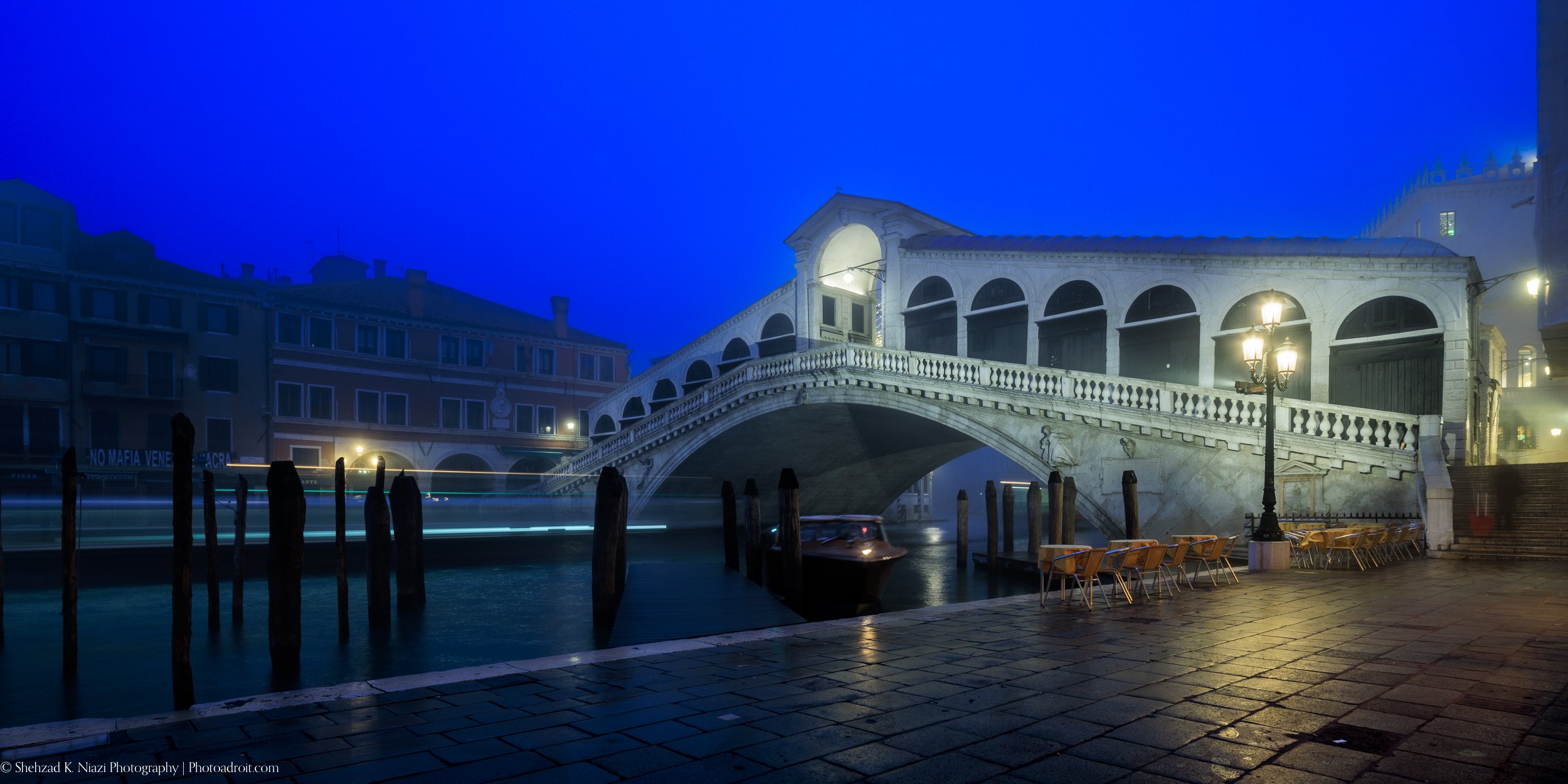The Rialto Bridge at Dawn.
In 1588-1591, Venetian architect Antonio da Ponte combined the form and function, the grace and dignity, with strength and permanence to rebuild the beautiful Rialto Bridge on the Grand Canal.
Rialto Bridge Panorama at Dawn
Anyone walking to the Rialto bridge, or riding in a Gondola, water taxi, or boat, will notice if they were to pay attention that this bridge is entirely made of stones. It is miraculous that a bridge made exclusively of stones could stand and remain structurally intact for centuries since 1591. The previous versions of this bridge were made of pontoons and boats (1181), wood (1255), a drawbridge (310-1444), and finally, the Antonio da Ponte built this current version between 1588-1591.
“ARCHITECTURE," John Ruskin, a victorian polymath declared was "the art which so disposes and adorns the edifices, raised by man for whatever uses, that the sight of them may contribute to mental health, power and pleasure."
Gustav Lindenthal, in an article in Scientific American (Vol 125, November 1921, p22-24), wrote that bridge-building required more advanced skills than building other structures. That is why till the builders learned how to make arches, they could not build bridges – even the builders as skilled as Egyptians who built the architectural marvels such as pyramids. Arches were possible around 600 BCE. But it was the Etruscans who learned and effectively used the skill of making graceful arches. It was only a matter of time before master builders extrapolated the design to bridge the banks of canals, streams, and eventually rivers, just like they built arches to connect vertical columns and learned the rudimentary but effective principles of weight distribution.
The tools might have been basic and rudimentary, but the designs were ambitious and built-structures beautiful. Rialto is a perfect example of such a design.
Rialto Bridge Venice Italy; stitched panorama with Leica Q2 Monochrom
For this black and white image, I used a Leica Q2 Monochrom with a Medium Yellow filter. To calculate the exposure, I used a Sekonic L-758 DR to take a spot meter reading from a shadow area that I wanted to retain details in. I then placed that area on Zone 3 by underexposing the scene by two-stops. This ensured that we did not lose the highlight details in the arch at the top of the bridge. I really liked the pattern created by the shadows in the foreground.
***
For the color image above, I made two images and later stitched them for the panoramic photo. The mixed light was a challenge for the light balance. The dynamic range was beyond what the camera sensor could reliably capture, and I don’t like the HDR. I took a spot-meter reading from the streetlamp and placed that on zone 8 (three-stop over-exposure than the meter reading). The cross-shadows on the underside of the bridge made exciting patterns. The reflections in the foreground continued to the stairs. The warm yellow tablecloths added a splash of color, contrasted with the bluish hue in the sky, and complemented the reflections on the walkway bricks.
Rialto bridge and surrounding area is always very busy. I was able to make these images without people in the frames. To do that, I got there about two hours before sunrise. There are distinct benefits of waking up early in the morning.
To An Early Riser (Max Eastman):
The eastern hill hath scarce unveiled his head,
And the deliberate sky hath but begun
To meditate upon a future sun,
When thou dost rise from thy impatient bed.
Thy morning prayer unto the stars is said.
And not unlike a child, the penance done
Of sleep, thou goest to thy serious fun,
Exuberant—yet with a whisper tread!
***
The eastern side of the Rialto bridge has architectural details, and steps can act as leading lines directing the haze to the central point of the image. For the image below, I changed my point of view and moved closer to emphasize the steps and their linear forms to make the Rialto Bridge focus of the image.
Rialto Bridge Panorama; Leica Q2 Monochrom with Medium Yellow Filter
Rialto Bridge at Dawn; Leica Q2 Monochrom
Rialto is a major stop for public transportation, and it is one of the busiest ACTV hubs. Check out different types of ticket options available. We bought the one-week pass. Hold on to it; my son lost his pass, and we had to purchase a new pass for him!
TIP
If you are staying in San Marco, it is worth walking to the Rialto stop to board the Vaporetto to the train station. It is faster that way.
As the sunrise approached, I started to see travelers walking towards the Vaporetto with their luggage.
The Rialto bridge has wide stone steps on each side, and there is a porch with a large chandelier. Shops line the central walkway, while the walkways on the canal-facing sides provide excellent vantage points for views of the Grand Canal.
Blue hour of the day painted the sky blue and the feel of the place changed.
Take Home Messages:
Arrive at a scene – especially the iconic places like Rialto bridge that are busy most of the time – 1-2 hours before sunrise
In the digital age, handheld light meters might be a relic of the days gone by, but are still quite helpful and save time
Walk around the subject of your images – a few steps forwards or back can significantly change the composition
Sensor technology has improved to a degree where high ISO is now usable. This is especially true for Leica Q2 Monochrom
Tripod is a must if you are planning to make any panoramas in low light, or want to use lower ISOs for maximum dynamic range and lower noise
***
EYES OF VENICE
Rivers of wonder,
Nights of yonder,
Lights of delight;
And - your eyes - forever somber
***


